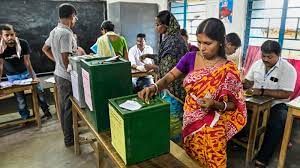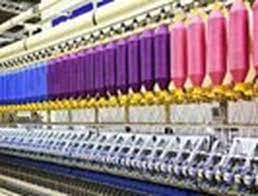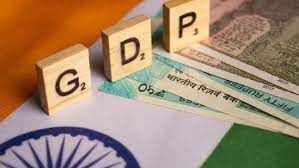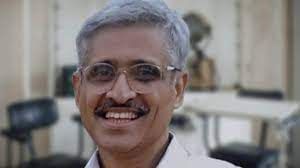UPSC Daily Current Affairs- 1st September 2023 | Current Affairs & Hindu Analysis: Daily, Weekly & Monthly PDF Download
GS-I
Southwest monsoon
Subject: Geography

Why in News?
As per recent reports, Rishikesh in Uttarakhand was India’s wettest town for most of August during the southwest monsoon season in 2023.
Background:-
- Between August 1 and August 25, the town received 1,901 millimeters of rainfall.
- During the same period, the two wettest places in India and the world, Cherrapunji and Mawsynram, received 1,876.3 mm and 1,464 mm of rainfall respectively.
About the southwest monsoon:-
- Monsoons are seasonal winds that reverse their direction with the change of season.
- Monsoons are peculiar to the Indian Subcontinent, South East Asia, parts of Central Western Africa, etc.
- They are more pronounced in the Indian Subcontinent compared to any other region.
- India receives southwest monsoon winds in summer and northeast monsoon winds in winter.
- South-west monsoons: formed due to an intense low-pressure system formed over the Tibetan plateau.
- North-east monsoons: associated with high-pressure cells over Tibetan and Siberian plateaus.
- South-west monsoons bring intense rainfall to most of the regions in India.
- Other Countries receiving most of the annual rainfall during the southwest monsoon season: Indonesia, Bangladesh, Myanmar, etc.
Factors responsible for the onset of south-west monsoon:-
- Intense heating of the Tibetan plateau: The Tibetan plateau gets intensely heated during summer, resulting in strong vertical air currents and the formation of low pressure over the plateau at about 9 km above sea level.
- Permanent high-pressure cell in the South Indian Ocean.
- Subtropical Jet Stream (STJ).
- Tropical Easterly Jet (African Easterly Jet).
- Inter Tropical Convergence Zone (ITCZ): It is a broad trough of low pressure in equatorial latitudes.
- This is where the northeast and the southeast trade winds converge
Factors that influence the intensity of south-west monsoons:-
- Strengths of Low pressure over Tibet and high pressure over the southern Indian Ocean.
- Somali Jet (Findlater Jet).
- Somali Current (Findlater Current).
- Indian Ocean branch of Walker Cell.
- Indian Ocean Dipole.
Mechanism of Monsoon:-
- The location of ITCZ shifts north and south of the equator with the apparent movement of the Sun.
- June: The sun shines vertically over the Tropic of Cancer and the ITCZ shifts northwards.
- The southeast trade winds of the southern hemisphere cross the equator and start blowing in the southwest to a northeast direction under the influence of the Coriolis force.
- These winds collect moisture as they travel over the warm Indian Ocean.
- July: The ITCZ shifts to 20°-25° N latitude and is located in the Indo-Gangetic Plain.
- This causes the southwest monsoons to blow from the Arabian Sea and the Bay of Bengal.
- The ITCZ in this position is often called the Monsoon Trough.
- The shift in the position of the ITCZ is also related to the phenomenon of the withdrawal of the westerly jet stream from its position over the north Indian plain, south of the Himalayas.
- Easterly Jet Stream (Somali Jet): sets in along 15°N latitude only after the western jet stream has withdrawn itself from the region.
- They are held responsible for the burst of the monsoon in India.
- As these winds approach the land, their southwesterly direction is modified by the relief and thermal low pressure over northwest India causing monsoon rainfalls.
Source: DTE
GS-II
Govt forms committee to work on ‘One Nation One Election’ legislation
Subject: Polity and Governance

Why in News?
The Centre has taken a significant step towards implementing the “One Nation, One Election” concept by forming a committee led by former President Ram Nath Kovind.
- This concept aims to synchronize elections across different levels of governance, with the intent of boosting efficiency and governance.
- The committee’s primary role is to draft the necessary legislative framework for the successful implementation of the concept.
One Nation, One Election: Background and Rationale
- The frequent occurrence of elections disrupts the continuity of developmental activities due to adherence to election-related codes and rules.
- The Prime Minister has been a vocal advocate of simultaneous elections as a solution to this issue.
- The core idea is to streamline elections across various tiers of government, thereby reducing administrative complexities.
Nature of Simultaneous Elections
- Presently, India conducts separate elections for the Lok Sabha and State Assemblies, leading to staggered electoral cycles.
- The “One Nation, One Election” approach envisions holding elections for all state assemblies and the Lok Sabha simultaneously.
Historical Context and Shifting Trends
- In the initial decades after independence, India witnessed concurrent elections.
- This trend shifted with the untimely dissolution of the fourth Lok Sabha in 1971, which marked the decline of simultaneous elections.
- The dissolution of the Lok Sabha during the National Emergency declared in 1975 and the dissolution of state assemblies after the 1977 Lok Sabha election further disrupted this cycle.
Challenges and Necessary Constitutional Amendments
- A significant challenge lies in aligning the terms of the Lok Sabha and Legislative Assemblies.
- Amendments to relevant articles of the Constitution, such as Article 83 for the Lok Sabha and Article 172(1) for Legislative Assemblies, may be required to enable synchronized elections.
Efficiency and Governance Benefits
Simultaneous elections offer several benefits:
- Reduction in effort, time, and expenditure due to consolidated election cycles.
- Mitigation of governance disruptions caused by the Model Code of Conduct during elections.
- Streamlined campaign expenses, potentially leading to cost savings.
- Improved voter turnout and enhanced credibility of the electoral process.
Challenges and Counterarguments
- Challenges include synchronizing terms, preventing mid-term dissolutions, and addressing the costs associated with electronic voting machines (EVMs).
- Counterarguments raise concerns about influencing voter choices, potential erosion of government accountability, and implications for democratic principles and federalism.
Ensuring Effective Implementation
- Robust legal safeguards are essential to address the challenge of mid-term dissolutions and maintain the integrity of synchronized elections.
- Some countries employ mechanisms like “no-confidence motions” to ensure governance continuity during the synchronized cycle.
Conclusion
- The “One Nation, One Election” initiative holds the potential to streamline India’s electoral process and enhance governance efficiency.
- Overcoming challenges requires a comprehensive approach along with suitable legal provisions, making the concept a practical reality while preserving democratic principles and federalism.
Source: The Hindu
Promotion of Research & Innovation in the Pharma-MedTech sector (PRIP) scheme
Subject: Government Schemes

Why in News?
Recently, the Union Cabinet approved the Promotion of Research & Innovation in Pharma-MedTech sector (PRIP) scheme.
Background:-
- The scheme has an outlay of ₹5,000 crore for five years, from 2023-24 to 2027-28.
About Promotion of Research & Innovation in Pharma-MedTech sector (PRIP) scheme:-
- Launched:2023.
- Ministry: Ministry of Chemicals and Fertilizers.
- Objectives: to transform the Indian Pharma MedTech sector from cost-based to innovation-based growth by strengthening the research infrastructure in the country.
Salient Features of Promotion of Research & Innovation in Pharma-MedTech sector (PRIP) scheme:-
- The scheme promotes industry-academia linkage for R&D in priority areas to inculcate the culture of quality research and nurture our pool of scientists.
- The scheme is proposed to have two components as follows:-
- Component A: Strengthening the Research Infrastructure.
- It will encompass the setting up of Centres of Excellence at the National Institute of Pharmaceutical Education & Research (NIPERs).
- Component B: Promotion of Research in Pharma MedTech sector:
- The budget 2023-24 proposes to encourage industry to invest in research and development in specific priority areas.
- Accordingly, it is proposed that financial assistance under the component would be provided to promote R&D.
Funding:-
- The funding disbursed for the projects will be recovered through benefit sharing (excluding refunded funding, if any) either through royalty or equity in the following ways:-
- 10% royalty on the net sale of the product/technology till the patent is effective.
- Equity (not less than 100% of the DoP support provided).
Benefits of Promotion of Research & Innovation in Pharma-MedTech sector (PRIP) scheme:-
- It will lead to sustained global competitive
- It will contribute to quality employment generation in the country.
Source: The Hindu
GREAT Scheme
Subject: Government Schemes

Why in News?
Recently, the Centre announced up to Rs 50 lakh grant for Grant for Research and Entrepreneurship across Aspiring Innovators in Technical Textiles (GREAT) scheme.
About GREAT scheme:-
- Launched: August, 2023
- Ministry: Ministry of Textiles.
- The Scheme focuses on supporting individuals and companies to translate prototypes into technologies & and products, including commercialization.
- Objective: To provide much-needed impetus for the development of the technical textiles startup ecosystem in India, especially in niche sub-segments such as bio-degradable and sustainable textiles, high-performance and specialty fibers, and smart textiles.
- The scheme will be commensurate with the National Technical Textiles Mission.
- National Technical Textiles Mission:-
- Ministry: Ministry of Textiles
- Duration: FY 2020-21 till FY 2023-24.
- Objective: to increase the penetration level of technical textiles in India while leveraging the extraordinary growth rate of the sector.
Salient Features of GREAT scheme:-
- Grant-in-aid: up to Rs 50 lakh.
- Duration: 18 months.
- The textile ministry will additionally provide 10 percent of the total grant-in-aid to incubators.
- Only a minimum of 10 percent contribution has to be made by the incubatee.
- Incubators: like IITs, NITs, Textiles Research Associations, and Centres of Excellence.
- Incubators: Organizations or institutions, that provide resources, mentorship, and support to startups during their early stages.
- The textiles ministry has also given a nod to 26 institutes for upgrading their laboratory infrastructure and training of trainers in the application areas of technical textiles.
- Technical Textiles: Textile materials designed to serve specific purposes beyond traditional clothing and furnishing, such as medical textiles, geotextiles, and industrial fabrics.
Source: Business Standard
GS-III
Production Linked Incentive (PLI) Scheme for IT Hardware
Subject: Economics

Why in News?
As part of its renewed PLI scheme for IT hardware, the Centre has received applications from 38 entities (Asus, Dell, HP, Foxconn, etc., excluding Apple), that want to manufacture laptops, personal computers and servers in India.
- The development comes weeks after the Centre imposed and then postponed a licensing requirement on the import of laptops and personal computers.
What is the Production Linked Incentive (PLI) Scheme?
- A cornerstone of the Government’s push for achieving an Atmanirbhar Bharat, the objective of the PLI Schemes is to
- Make domestic manufacturing globally competitive
- Create global Champions in manufacturing and
- Generate employment opportunities for the country’s youth.
- The strategy behind the scheme is to offer companies incentives on incremental sales from products manufactured in India, over the base year.
- They have been specifically designed to
- Boost domestic manufacturing in sunrise and strategic sectors,
- Curb cheaper imports and reduce import bills,
- Improve cost competitiveness of domestically manufactured goods, and
- Enhance domestic capacity and exports.
- The first three PLI Schemes were approved earlier in March, 2020 and these were followed by another 10 New PLI Schemes in November, 2020.
- The Union Budget 2021-22, announced an outlay of INR 1.97 Lakh Crores for the PLI Schemes for 13 key sectors.
- This means that minimum production in India as a result of PLI Schemes is expected to be over US$ 500 billion in 5 years.
What is the PLI scheme for IT Hardware?
- It was first announced in February 2021 with an initial outlay of around Rs 7,300 crore over a period of four years.
- Domestic players investing Rs 20 crore and clocking sales of Rs 50 crore in the 1st year, Rs 100 crore in the 2nd, Rs 200 crore in the 3rd, and Rs 300 crore in the final year, would pocket incentives of 1-4% on incremental sales over 2019-20.
- The first version of the scheme was a laggard with only two companies - Dell and Bhagwati - managing to meet first year’s (FY22) targets, and the industry calling for a renewed scheme with an increased budgetary outlay.
- As a result, the Union Cabinet cleared a revised PLI scheme for IT hardware (in May, 2023) with an outlay of Rs 17,000 crore, more than doubling the budget for the scheme.
- The PLI 2.0 could attract big global IT hardware manufacturers to shift their production base to India and give a boost to local production of laptops, servers, personal computers, etc.
- The average incentive over six years will be about 5% compared with the 2% over four years offered earlier.
- As the IT hardware industry is targeted to reach a production of $24 billion by 2025-26 (and exports ~$12-17 billion), this scheme will play a key role in achieving the $1 trillion digital economy goal, including $300 billion of electronics manufacturing by 2025-26.
How will the PLI Scheme Boost Local Production in India?
- Even as the country has identified electronics manufacturing as a key sector for future economic growth, India has seen an increase in imports of electronic goods in the last few years.
- For example, the import of electronic goods increased to $6.96 billion (during April-June this year) from $4.73 billion in the year-ago period, with a share of 4-7% in overall imports.
- The highest share of imports is in the category of personal computers including laptops, and palmtops.
- China accounts for roughly 70-80% of the share of India’s imports of personal computers, laptops.
- Companies that locally manufacture certain components including memory modules, display panels, etc., will also get additional incentives under the restructured scheme.
- The PLI scheme seeks to penalise companies if production lags behind the set thresholds, by deducting as much as 10% from the subsidies.
- The PLI scheme will interplay with the semiconductor scheme of the government, with chips made in India and being used by laptop manufacturers.
Source: Indian Express
GDP grew 7.8% in first quarter
Subject: Economics

Why in News?
Growth in India’s Gross Domestic Product (GDP) and the Gross Value Added (GVA) in the economy sped to 7.8% in the first quarter of this year.
- This was revealed by the estimates released by the National Statistical Office (NSO).
National Statistical Office(NSO)
- About
- The Ministry of Statistics and Programme Implementation has two wings, one relating to Statistics and the other Programme Implementation.
- The Statistics Wing called the National Statistical Office(NSO).
- NSO consists of the Central Statistical Office (CSO), the Computer centre and the National Sample Survey Office (NSSO).
- Function:
- Releases quarterly GDP data on the last working day of the second month after the reporting quarter;
- Releases the Index of Industrial Production (IIP) every month in the form of quick estimates;
- Organizes and conducts periodic all-India Economic Censuses;
- Maintains liaison with international statistical organizations, such as, the United Nations Statistical Division (UNSD), the Economic and Social Commission for Asia and the Pacific (ESCAP) etc.;
- Prepares national accounts as well as publishes annual estimates of national product, government and private consumption expenditure, capital formation, savings, estimates of capital stock and consumption of fixed capital
Key Economic Terminologies:
- GDP and GVA are the two main ways to ascertain the country’s economic performance that measures national income.
- GDP:
- The GDP is a monetary measure of all final products and services (those purchased by the final user) produced in a country over a certain period.
- The GDP accomplishes this by adding total expenditures in the economy, examining who spent how much, thus, measuring the economy's overall "demand."
- 4 key engines of GDP growth: (GDP = C + I + G + NX)
- Consumption (C)/Private Final Consumption Expenditure (PFCE): The biggest engine is consumption demand from private individuals.
- Investment (I)/Gross Fixed Capital Formation (GFCF): The second-biggest engine is the investment demand generated by private sector businesses.
- Government (G)/Government Final Consumption Expenditure (GFCE): The third engine (~11%) is the demand for goods and services generated by the government.
- Net Exports (NX) = Exports minus imports.
- Gross value added (GVA):
- It calculates the same national income from the supply side, by adding up all the value added (value of output minus the value of its intermediary inputs) across different sectors.
- This value added is shared among the primary factors of production, labour and capital.
- By looking at the GVA growth one can understand which sector of the economy is robust and which is struggling.
- How are GDP and GVA related?
- GDP = (GVA) + (Taxes earned by the government) — (Subsidies provided by the government).
- If the taxes > subsidies it provides, the GDP will be higher than GVA.
News Summary: GDP grew 7.8% in first quarter
- GDP growth rate
- India’s GDP clocked a growth rate of 7.8 per cent in the April-June quarter of FY24.
- GDP growth stood at 6.1% in the January to March 2023 quarter and at 13.1% in the first quarter of 2022-23.
- At 7.8 per cent, India remains the fastest-growing major economy as China’s GDP growth in the April-June quarter was 6.3 per cent.
- Real GDP in Q1 2023-24 is estimated to attain a level of ₹40.37 lakh crore, as against ₹37.44 lakh crore in Q1 2022-23.
- Real GDP is a measure of the total value of goods and services produced in a country during a specific period, adjusted for changes in the price level.
- Real GDP = (Price level in the base year) x (Quantity of goods and services produced in the current year).
- Meanwhile, India’s nominal GDP in Q1FY24 showed a growth rate of 8 per cent as compared to 27.7 percent in Q1 FY2022-23.
- Nominal GDP is the total value of goods and services produced in a country during a specific period, typically a year or a quarter, measured in current market prices.
- Nominal GDP = (Price level in the current year) x (Quantity of goods and services produced in the current year).
- India’s GDP clocked a growth rate of 7.8 per cent in the April-June quarter of FY24.
- Sector-wise growth
- Manufacturing GVA grew for the second quarter in a row, with the pace of growth picking up slightly to 4.7% in Q1 of 2023-24, from 4.5% in the previous quarter.
- Agriculture, Forestry and Fishing GVA grew 3.5% between April to June.
- It was the Services sectors that recorded the sharpest surge.
- Financial, Real Estate and Professional Services GVA grew 12.2% in Q1.
- GVA from Trade, Hotels, Transport, Communication and Services related to broadcasting rose 9.2%.
- GVA from Public Administration, Defence and Other Services, as well as the employment-intensive Construction sector rose 7.9% each.
- GVA from Electricity, Gas, Water Supply and Other services grew just 2.9%, while Mining and Quarrying GVA grew 5.8%.
- Moderate growth ahead
- India’s growth rate is expected to moderate in the coming quarters. This is due to:
- the effect of the El Nino on the monsoon;
- weakness in mining output;
- sluggish exports, and
- a possible slowing in the momentum of government capex as Lok Sabha elections approach.
- India’s growth rate is expected to moderate in the coming quarters. This is due to:
Source: The Hindu
2023 Ramon Magsaysay Award to Indian Oncologist
Subject: Science and Technology

Why in News?
Dr. R. Ravi Kannan, a surgical oncologist and Director of Cachar Cancer Hospital and Research Centre (CCHRC) in Assam, has been named one of the 2023 Ramon Magsaysay Awardees.
- His pioneering efforts have revolutionized cancer treatment in Assam by prioritizing people-centric and pro-poor healthcare solutions.
Dr. Kannan’s Inspiring Work
- Under Dr. Kannan’s guidance, CCHRC evolved from having limited facilities to encompassing 28 departments, including oncology, pathology, radiology, microbiology, epidemiology, and palliative care.
- The hospital introduced pro-poor measures such as free treatment, lodging, meals, ad hoc employment for caregivers, and a homecare program to address patients’ challenges in continuing treatment due to poverty and distance.
- The hospital team extended their support by providing training to family members in pain management and palliative care, and distributing free medicines.
- As a result, the compliance rate for cancer treatment increased remarkably, from 28% to 70%.
About Ramon Magsaysay Award
- The Ramon Magsaysay Award, established in 1958, stands as a significant accolade, often referred to as Asia’s equivalent of the Nobel Prize.
- This prestigious award honors individuals and organizations in Asia for their exceptional contributions to society across various domains.
Who was Ramon Magsaysay?
- Ramon Magsaysay was the Philippines’ president from 1953 until his tragic death in a plane crash in 1957.
- He gained prominence during World War II when Japanese forces occupied the Philippines, then a US colony.
- In December 1953, he was elected president from the Nationalist Party, the country’s oldest political party.
- Post-war chaos gripped the Philippines in 1946, accompanied by a widening gap between the rich and poor, exacerbated by the expansion of capitalism.
- Amidst suspicions of communist affiliations and demands for peasant rights, leaders were targeted by the government, aligned with the USA.
- Magsaysay’s administrative and military strategies played a pivotal role in countering the perceived threat of communism.
Indian Awardees: A Legacy of Excellence
Eminent Indians have been recognized through the Ramon Magsaysay Award:
- Vinoba Bhave (1958)
- Mother Teresa (1962)
- Kamaladevi Chattopadhyay (1966)
- Satyajit Ray (1967)
- Mahasweta Devi (1997)
- Arvind Kejriwal (2006)
- Anshu Gupta of Goonj (2015)
- Bezwada Wilson, human rights activist (2016)
- Ravish Kumar, journalist (2019)
Significance of the Award
- The Ramon Magsaysay Award symbolizes a deep commitment to altruism and service, acknowledging outstanding contributions that make a positive impact on society.
- It is a reminder that individuals and organizations can effect transformative change through their selfless efforts.
Source: The Hindu
|
38 videos|5288 docs|1117 tests
|
















